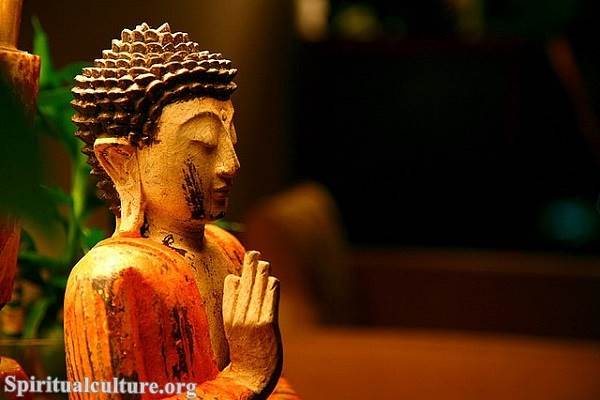Faith. A word whispered in prayer, shouted in crisis, etched into sacred texts, and lived out in quiet, unseen ways. It’s a concept both universal and deeply personal — something we speak of with reverence, yet often struggle to fully understand.
As Spiritual Culture, we invite you into a space of exploration. Not just to define faith, but to dwell with it. To ask: What does it truly mean to have faith? Is it mere belief? A leap into the unknown? Or something far more alive — more relational, more grounded, more transformative?
This article will journey through the spiritual, psychological, and cultural depths of faith. We’ll walk through sacred texts, ancient wisdom, and modern soul-searching to uncover the heart of what it means to have faith — and to be held by it.
What Is Faith, Really?
Beyond Belief: Faith as a Living Relationship
Faith is often mistaken for belief — as though to “have faith” simply means to agree with an idea. But in nearly every sacred tradition, faith is not just about what you believe. It is about how you live, whom you trust, and what you surrender to.
In the Christian scriptures, faith is described as “the substance of things hoped for, the evidence of things not seen” (Hebrews 11:1). This is not passive mental assent. It is a courageous, grounded trust in a reality that is invisible but deeply true.
The Hebrew and Greek Roots
The Hebrew word often translated as “faith” is emunah — which means steadfastness, fidelity, trustworthiness. It’s about reliability, not just belief. You are faithful when you show up, when you endure, when you stay.
In the New Testament, the Greek word pistis also speaks to trust and confidence — not merely in doctrines, but in God’s character. To have faith is to lean your full weight into something greater than yourself.
Faith as Trust in the Face of Uncertainty
Faith Doesn’t Eliminate Doubt — It Walks Through It
To have faith doesn’t mean to have all the answers. In fact, faith often begins where certainty ends. It is not the absence of fear, but the decision to trust even in the presence of fear.
Abraham — revered in Judaism, Christianity, and Islam — left everything familiar in obedience to a voice he could not see. The Prophet Muhammad continued to recite revelations even when mocked. Siddhartha Gautama left his palace seeking liberation in the face of suffering. Each of these was an act of faith — not blind, but bold.
Holding On When Nothing Makes Sense
In moments of loss, confusion, or despair, faith is what carries us. When logic fails and feelings waver, faith becomes the deeper current — the “yes” beneath our “why?”. Faith doesn’t always give explanations. But it gives strength.
Faith as Surrender and Trust in the Divine
“Let it be to me according to your word.”
In the Gospel of Luke, Mary’s response to the angel — “Let it be to me according to your word” (Luke 1:38) — is one of the most profound acts of faith. She doesn’t demand guarantees. She simply yields.
This posture of surrender — not of defeat, but of trust — is echoed across traditions. In Hindu bhakti yoga, surrender to the Divine is seen as the pathway to liberation. In Islam, the very word Islam means submission — but submission out of reverence and love.
Faith is not just about clinging. Sometimes, it’s about releasing. Releasing the need to control, to know, to win — and choosing instead to rest in divine presence.
The Journey of Faith: Growing, Stretching, Transforming
Faith Begins Small — Like a Seed
Jesus once said, “If you have faith as small as a mustard seed…” (Matthew 17:20). Faith doesn’t require perfection. It requires willingness.
A seed doesn’t look like much. But within it is life, movement, potential. Faith begins with a whisper — a prayer, a tear, a hope — and grows through practice.
Tested by Fire, Made Strong in Struggle
Real faith is not fragile. It is refined. As gold is purified by fire, so is faith shaped by life’s fiercest trials.
In the Bhagavad Gita, Arjuna’s moment of crisis becomes the moment of deepest faith — when he lays down his weapons and listens to Krishna. In Buddhism, the practice of mindfulness builds inner trust that leads to unshakable clarity.
Spiritual growth is not linear. It’s often messy, full of contradictions. But faith gives us the courage to keep going — even when the road is not clear.
Faith and Action: Walking What We Believe
“Faith without works is dead.” — James 2:26
Faith is not only inward — it is outward. It moves us to love, to act, to serve. True faith has feet.
In Judaism, emunah is deeply connected to doing — to mitzvot (sacred actions), to justice, to covenantal living. Faith is not abstract. It is woven into how we treat others, how we uphold dignity, how we repair the world (tikkun olam).
In Christianity, the fruit of faith is love. As Paul writes: “If I have faith that can move mountains, but do not have love, I am nothing.” (1 Corinthians 13:2)
Love Is the Greatest Evidence of Faith
Faith shows itself not just in creeds, but in compassion. Not just in rituals, but in relationships. When someone is hurting, do we show up? When injustice rises, do we speak?
Faith is not proven by what we say, but by how we live. It is revealed in quiet kindness, sacrificial courage, persistent hope.
Faith Across Cultures and Traditions
Universal Longing, Diverse Expressions
Every tradition speaks of faith — but in different hues.
- In Islam, iman is faith in God, angels, books, messengers, the Last Day, and divine decree — a wholeness of trust that shapes life.
- In Buddhism, faith (śraddhā) is the confidence in the path, the teacher, and the Dharma — not blind belief, but experiential assurance.
- In Hinduism, shraddha is the heart’s devotion, the conviction that truth exists and can be known.
- In Christianity, faith is trust in Christ — not only for salvation, but for every breath.
Despite differences, the common thread is this: faith is a movement of the heart toward something greater. A choice to hope. A decision to love. A journey toward the sacred.
What Faith Is Not
Not Blindness, Not Control
Faith is not turning off your mind. It is not “checking your brain at the door.” Many great thinkers — from Augustine to Al-Ghazali to the Dalai Lama — have wrestled, questioned, doubted, and still believed.
Faith is not coercion. It is not “if you don’t believe, you’re doomed.” True faith respects freedom. It invites, but does not manipulate.
Not Immunity from Pain
Having faith does not guarantee comfort. In fact, it may lead you into deeper suffering — for the sake of love, truth, justice.
Jesus was full of faith — and He was crucified. The Buddha had insight — and still faced sickness and death. Faith does not remove pain. But it redeems it. It gives it meaning.
Reflect and Reimagine
To have faith is to trust the unseen, love the eternal, and walk with courage through uncertainty. It is not a static possession, but a living relationship — with God, with others, with your truest self.
Faith is not always loud. Sometimes, it is a whisper. Not always sure, but always choosing. Not always easy, but always worth it.
So what does it mean to have faith?
It means waking up and trying again. It means loving when it hurts. It means praying when you don’t feel heard, and trusting that silence is not absence. It means holding to a light that shines beyond reason — and walking toward it, step by sacred step.
Spiritual Culture invites you to pause and ask:
- What do you place your trust in?
- Where is your faith being called to grow?
- What would it look like to live faith, not just believe it?
Wherever you are, however shaky or sure, you are not alone. Faith begins right where you are. And it leads you home.

